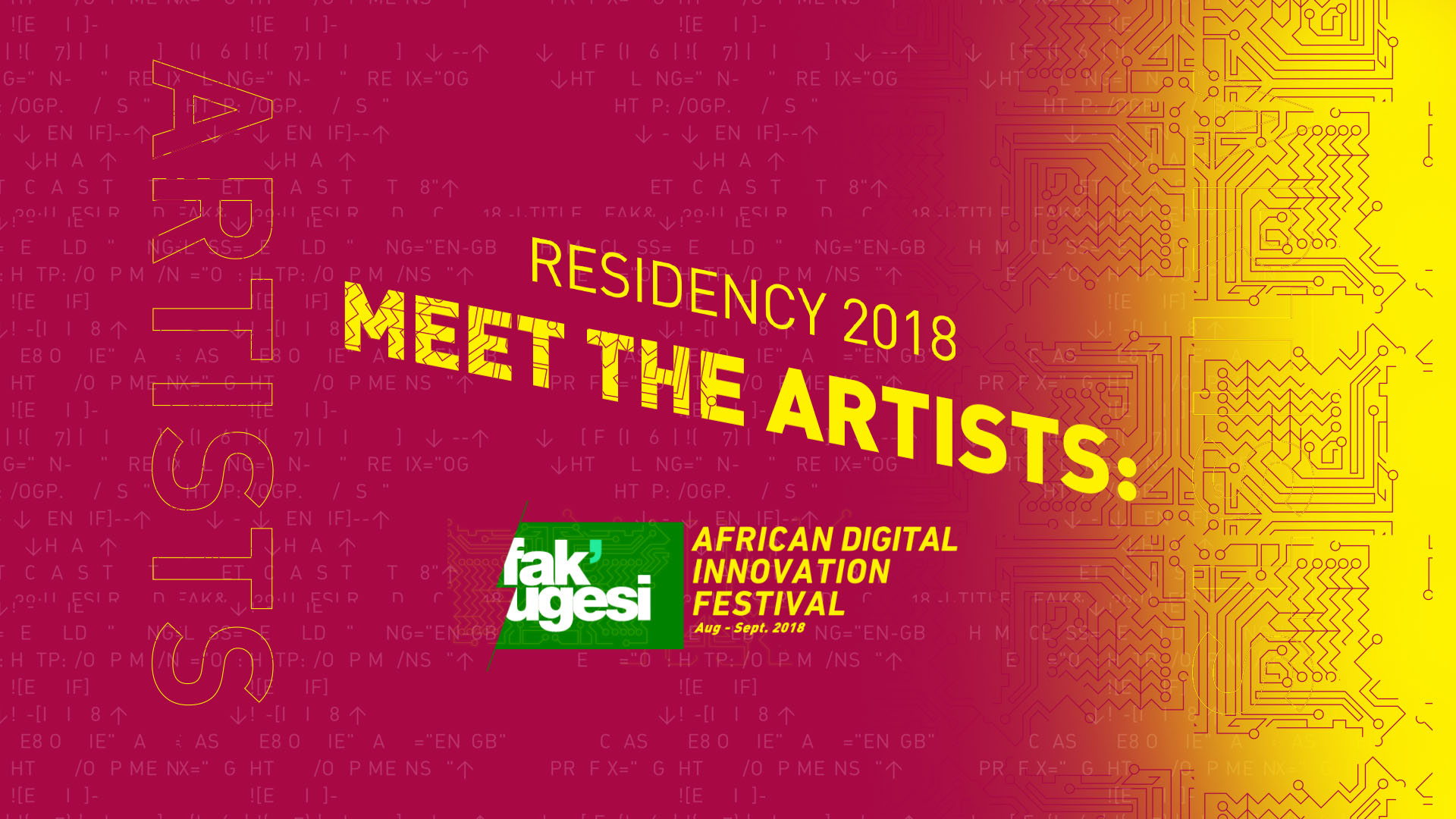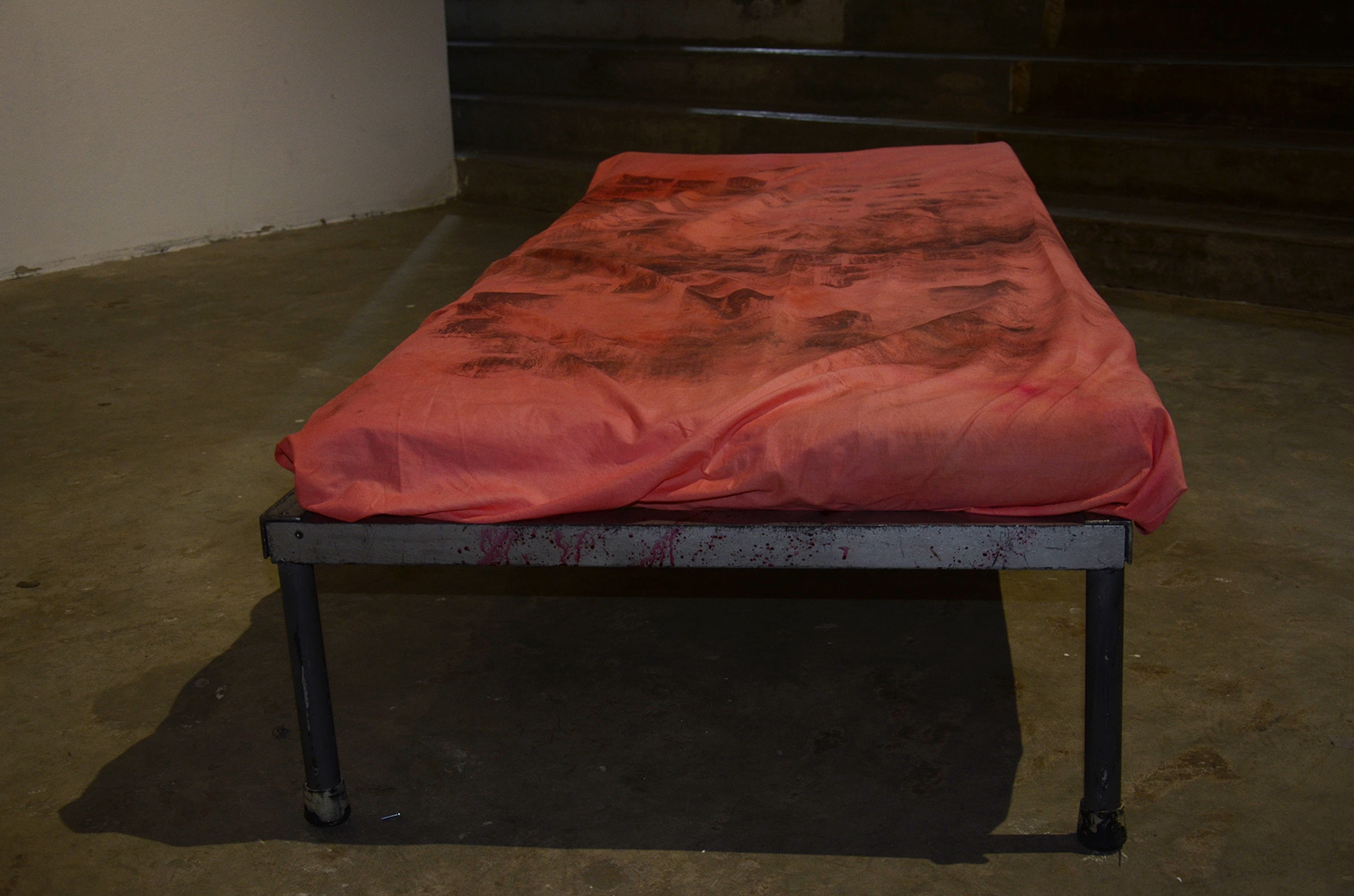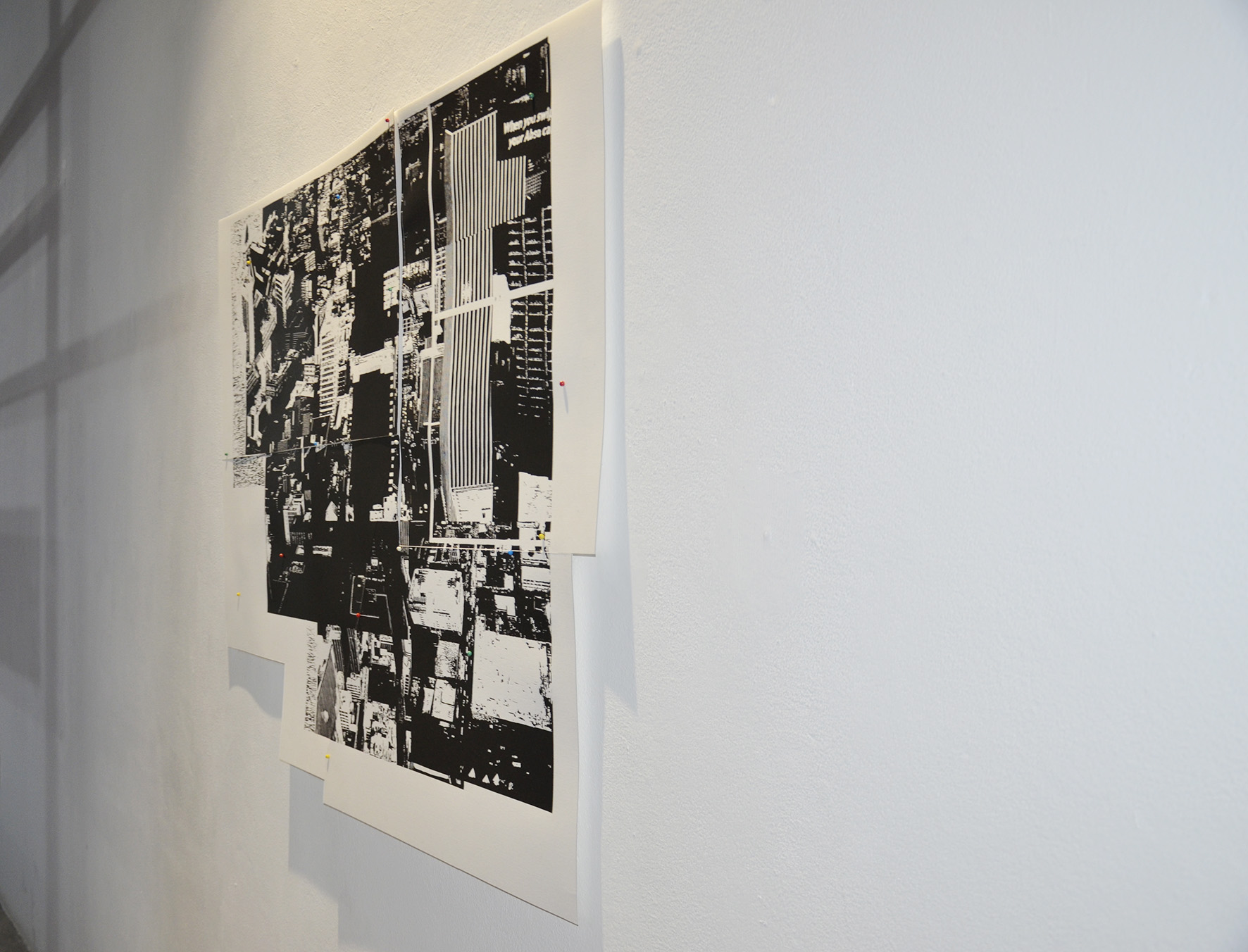The Fak’ugesi Festival is currently underway with their fifth and most expansive artist’s residency to date running from the 8 August until the 9 September 2018, working towards a group exhibition that will take place from the 4th September. The creative residency that was first established in 2014, acts to support creative innovators and young digital creatives. This year’s residency sees artists and technologists from various parts of the world come together in the spirit of technological innovation and digital creativity. Working in one space the shared idea is to learn from one another and to shape thought provoking work in response to this year’s festival theme of Afro Source Code. Supporting regional connection and networks in the digital arts, the residency includes artists from Cairo, Geneva, South Africa, Zimbabwe, Mumbai and Bangalore. Tapping into the patterns, fractals and algorithms of their endemic cultures, each artist will “…explore the role that vernacular and traditional cultures have in digital culture and practices” states Fak’ugesi Director Dr Tegan Bristow.
As collaborative partners, Fak’ugesi and Pro Helvetia are extending this year’s residency to include North Africa, Switzerland, South Asia – in extension of what is usually an annual SADC focus. The 2018 programme by Pro Helvetia Johannesburg is in celebration of the anniversaries of their offices in Johannesburg, Cairo and New Delhi. This year’s residents are hosted by Tshimologong Precinct’s cutting-edge Maker Space as well as the Wits School of Arts Point of Order Gallery.
I had an interview with each resident about their practice, the residency as well as the work that they are developing for the coming exhibition:
Joshua is a Zimbabwean writer, performing artist, DJ and producer. The Monkey Nuts is an arts collective based in Harare that he co-founded. The group perform and record experimental hip hop and dabble in visual, sound and installation art. In addition to this, they host and coordinate exhibition and events.
The collective has received their tier of success with the signing of a record deal with BBE Music for the release of the experimental ‘Boombap Idiophonics’ album in 2014. A collaboration with the underground French music producer DJ Oil, Joshua acted as a producer for two tracks on the album and performed and wrote for each song, resulting in regular tours for the collective. His style as a producer and DJ has been referred to as afro-futuristic in nature.
Joshua’s work developed during the course of the residency aims to explore the evolution of traditional music instruments – the music that is produced through their play, their sounds, as well as their role in the social and spiritual aspects of communication in Zimbabwean Shona culture.
Focused on the sound of Zimbabwe’s most principal traditional instrument the Mbira, Joshua has set forth on digitizing the sound through the process of sample based synthesis. Motivated by the instrument’s popular use as a tool to communicate with God via the ancestors, Joshua’s seeks to question whether his digitized sound of a Mbira can inform a heightened connection with the spirit world. His project will take the final form of a sound installation piece.
Yara is an electro-acoustic music composer and sound artist from Cairo. The artist and scholar’s sonic medleys take their influence from city infrastructure and the movement of urban centres. Concerned with the history and philosophy of architecture and building she similarly investigates the connection that architecture has with the emptiness that surrounds it.
Her working method is to extract musical conversation in visual imagery. Yara is a performance and video artist integrating visual images of society into progressives for her work. She acts as a curator of multidisciplinary events, workshops, concerts and mediations in both Europe and in the Middle East.
Her project for the exhibition pursues transferring the soundscape of Johannesburg into objects of materiality – 3D printed objects. She shares with me that this project was started while she was in Switzerland and is being continued in Johannesburg.
She goes on to explain that through her research and work methodology she is attempting to record the frequency of sound waves that exist and travel through buildings and old architectural structures. This sound is placed on sound tracks that are mixed with ambient noise present within these spaces.
Yara’s interest in partaking in the residency was fuelled by a curiosity to discover the city and learn more about its inhabitants as well as to experience the sounds of the architecture in the city. For her project Yara is unpacking various sounds of the city such as the sounds of markets, the bustling streets, the sounds of different languages being spoken as well as transportation which she then translates into its final format, as a 3D sculptural object – thus making the sound of the city visible in a single identifiable object.
A hybrid artist from Mabopane and currently based in Johannesburg, Nkhensani’s chosen mediums of expression include photography, sound, sculpture and experimental film making. The Open Window Film graduate self-published his photobook, ‘Grain: Volume 1’ in 2017 as well as produced and recorded an EP, ‘23’. These projects were concerned with love, mythology, royalty, metaphysics, the intersections of immortality and the space between time and distance.
In this year, his focus has narrowed in on the anthropological studies of African rituals and Ancient tribes as well as cybernetics. His work aims to function as a stimulant for societal discourse around the afore mentioned themes and their intersection with popular culture, our bodies and space itself. Nkhensani makes use of a multitude of mediums with which he examines the nuances between the spiritual realm and the digital world and futurism’s spatial distribution within the African diaspora.
On discussing the residency, the artist states, “As an analogue photographer, it’s been interesting to explore collaboration using digital tools and thematics.”
His work for the exhibition, ‘Image of Transgression’ explores and places an inquiry into humanity’s mutation and the spaces occupied by us with images. With this conceptual backbone, he has taken note of the ways in which western culture has shaped the spaces occupied by African bodies. Exploring ways in which Africans and African philosophy can form future timelines and spaces he shares that this is motivated by the challenge posed by African cultures surrounding the notion that time and space are rudimental facets of the natural world. “African cultures see no boundaries between the physical and spiritual…”
His work for the show has taken its origin from his ongoing seascape photographic series ‘Mawatle’, delving into the aquatic beginnings of humankind with the South African coastline as its backdrop. Making use of this archival image set as well as images recently developed, he intends to expand upon and disseminate human-beings’ current stage of mutation from what he refers to as “tangible terrestrial spaces” to “intangible cybernetic spaces”.
The final elements that will come into play in his final display for the exhibition will be expired Konica emulsions placed in an 80’s Kodak analogue camera, coded data extracted from his developed imagery as well as an experimental 16mm motion picture dealing with the subject of mutation. His hope is to make use of projection mapping for the final presentation of his film.
In a single statement Nkhensani shares the sense of affinity he shares with Fak’ugesi and his reasons for applying, “…The thematic tapestry of Fak’ugesi is inseparable from cybernetics and African culture in its essence. This is one of the primary reasons I applied for this residency, it resonates immensely with my personal artistic thematics.”
In conversation, he shares what he will take away most from the residency, “The future is already here, it just needs distribution, especially to minorities.”
Exploring the variety of links found between social relationships, algorithms, and language, Mathilde is an interaction designer and artist with work embodying a multitude of mediums including web extensions, generative art, connected devices and mobile apps. Her overarching interest can be found in the way that technologies open up alien means of perception. After completing a graphic design and media art qualification she proceeded to her master’s degree in interaction design which was obtained through the Geneva School of Art and Design.
Her work developed during the residency explores the use of universal means of communication – emotions. Additionally, her work will attempt to unravel the way in which computers and algorithms view traditional cultures on a more global scale.
Her work is taking the shape of an “emotional radio” – a radio that can be operated through facial expressions (an indication of a person’s emotional state and or feelings). The interactive concept is based on human interaction with one person acting as a listener to the music and or radio while the other is able to control the music playing on the device by simply adjusting their facial expression through a smile or a funny face for example.
For her idea to come to life, Mathilde recorded copious amounts of music from various radio stations in Johannesburg. After this initial stage, she developed a program that identifies the various captured sounds into a wide range of emotions expressed through facial movements. “It’s a collaborative way to listen to music, and also an experience of discovering music from a ‘computational point-of-view.’”
Her project will be showcased as an interactive, collaborative installation piece displayed in the gallery and as a web platform that can be accessed from anywhere. Although the web platform iteration of the project will not have the collaborative element to it, the radio will still be controllable with facial expressions/emotions. Mathilde expresses that being a part of the residency has influenced the way in which she normally approaches work due to the sheer amount of different languages spoken in South Africa and has had a positive impact steering her focus to ways of communicating universally, transcending language barriers between people.
The artist and scholar from Mumbai has his attention nestled in the analysis of information, manifestation and ways of seeing. Experimenting with cognition, interactivity, kinetics and light-photosensitivity – his interactive artworks traverse the boundaries of art and science.
Abhiyan’s work simultaneously questions and establishes dialogue around our natural lives and the relationship we have with the planet, expressed in his projects as body hacking, using breath to control a game or making use of devices to listen to signals generated by the planet to name but a few examples. Exploring emerging technologies and platforms that are becoming increasingly relevant in a world of mediated interactions and experiences, his academic history is rooted in Engineering, Communication Arts, New Media and Information Science. A course leader of Experimental Media Arts at the Srishti Institute of Art, Design and Technology, Abhiyan is also the founder of Nalanda Lab in Nagpur.
Abhiyan shares that working in South Africa for the residency has been inspiring due to the technological shift currently taking place in the country, providing a space for innovators from different parts of the world to think about culture, technology and society as a whole.
For the exhibition Abhiyan is working on a collaborative project with Anoop Saxena centred around water and ways of controlling the natural element and source of life. This project seeks to find a solution to the country’s recent droughts and regular water shortages. The team is taking their inspiration from traditional thinking around water. What is its meaning, which ritualistic practices are performed using water, in which way is water interpreted, which natural forces of the wild can be controlled by human intervention as well as how natural environments grant access to the interpretation of its natural elements in culture?
“In this particular installation, we are trying to question cognition and look at it empirically as it produces electrical currents in our visual cortex.” In attending the event I am told that audiences should expect a visceral experience where thought has the ability to drive forms in this group’s interactive installation.
His interest in partaking in the residency equally weighs in on his academic interest and provides him with an opportunity to experience how technology is interpreted and how its backing science is transferred into something tangible, translating into an aesthetic experience.
“…Our natural lives have always been augmented with tools and technics- just they are advanced now…”.
Anoop is a designer and Educator practicing from Bangalore, India specialising in Science Communication and Electronics. He creates customised design solutions for non-government organisations, science galleries and educational institutes. In addition to this he hosts customised workshops on Digital Making, Design Thinking, STEAM learning, Embedded System, Coding, Robotics, Fun Science and loT for a variety of institutions. He is currently an Associate Faculty member in Digital Game Design at the National Institute of Design.
Anoop explains that for the project he is developing in collaboration with Abhiyan, they are addressing the need for science and digital literacy in modern society. His essential understanding of Science Communication and Electronics is a beneficial quality to the collaboration, assisting in the creation of an interactive experience that the duo is interested in offering to their audience. For Anoop their installation will be an “immersive experience of [the] biological and digital world.”
With their project, they are exploring a variety of different forms and materials. Making use of an EEG machine they are unpacking ways of understanding the functioning of the prefrontal cortex of the human brain.
The exhibition will take place from the 4th – 9th September 2018 at the Point of Order in Braamfontein. Visit the Fak’ugesi website for more details.








